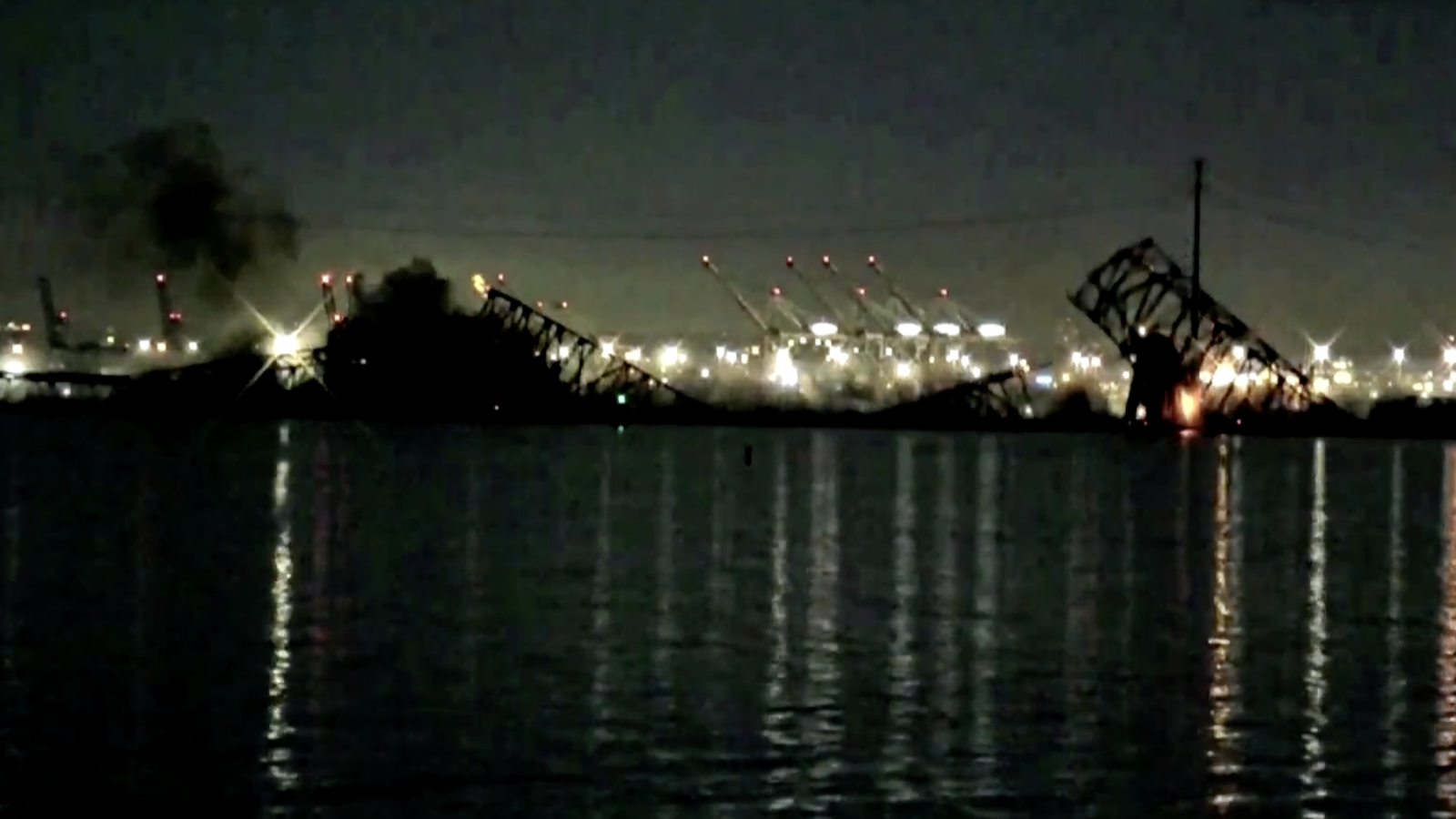Shipping industry experts are reporting that “dirty fuel” may be a reason why the Dali cargo ship lost power before smashing into the Francis Scott Key bridge.
A 2018 report by the Atlantic Council reported cargo ship tanks are often filled with a “witches brew” of industrial products which has resulted in hundreds of engine failures in the last year.
Gerald Scoggins, the CEO of Deepwater Producers shared that Dali’s power failure could have stemmed from “dirty fuel clogging filters that lead to the ship’s main generator.”
As of right now, the Dali’s cause of power loss has yet to be revealed by the NTSB but they have yet to rule out dirty fuel.
Safety investigators to probe whether dirty fuel contributed to Francis Scott Key Bridge collapse https://t.co/FPtX9NbVkT pic.twitter.com/7TLhpRh79L
— New York Post (@nypost) March 27, 2024
Here’s what MSN reported:
“Dirty fuel” is one of several possible factors that may have caused the cargo ship Dali to lose power in the moments before it smashed into the Francis Scott Key Bridge in Baltimore on Tuesday, according to shipping industry experts.
The investigation by federal, state and local authorities into what went wrong on the Dali is just beginning. But the deadly events on the Patapsco River in the dark of night have shined a light on the travails of the global shipping industry, including a long-standing problem with dirty fuel.
ADVERTISEMENTAccording to a 2018 report for the Atlantic Council think tank, a “witches brew” of industrial products ends up in marine fuel, resulting in hundreds of engine failures in recent years that have left ships powerless and drifting across the high seas.
The Dali went dark as it lost electrical power just before the bridge disaster, and the pilot lost the ability to control the ship as it veered toward the support structure of the bridge. That power loss could have been caused by dirty fuel clogging filters that lead to the ship’s main generator, said Gerald Scoggins, a veteran chief engineer in the oil and gas industry and the CEO of the Houston company Deepwater Producers.
He noted that ships use different fuels for different portions of their cruise. While inside a port, as the Dali was before the collision, ships typically run on a relatively light diesel fuel. That also could have been contaminated. Common contaminants include water, dirt and algae, Scoggins said.
“Dirty fuel” is one of several possible factors that may have caused the cargo ship Dali to lose power in the moments before it smashed into the Francis Scott Key Bridge in Baltimore on Tuesday, according to shipping industry experts. https://t.co/PnbiKKf62a
— The Washington Post (@washingtonpost) March 28, 2024
Here’s what The New York Post shared:
A safety investigation into the Francis Scott Key Bridge collapse in Baltimore, Maryland, will include whether contaminated fuel was a factor in a cargo ship losing power and crashing into the bridge.
Investigators had not boarded the ship, a 948-foot-long container ship called the Dali, as of late Tuesday while it remained stuck on a pillar of the collapsed bridge, and the vessel could stay there for weeks.
Rescue crews spent much of Tuesday searching for potential survivors, but officials announced that the search and rescue had been turned into a recovery operation.
The lights on the Dali began to flicker about an hour into the ship’s trip early Tuesday.
A harbor pilot and assistant reported power issues and a loss of propulsion prior to the collision, according to a Coast Guard briefing report.
ADVERTISEMENT



Join the conversation!
Please share your thoughts about this article below. We value your opinions, and would love to see you add to the discussion!